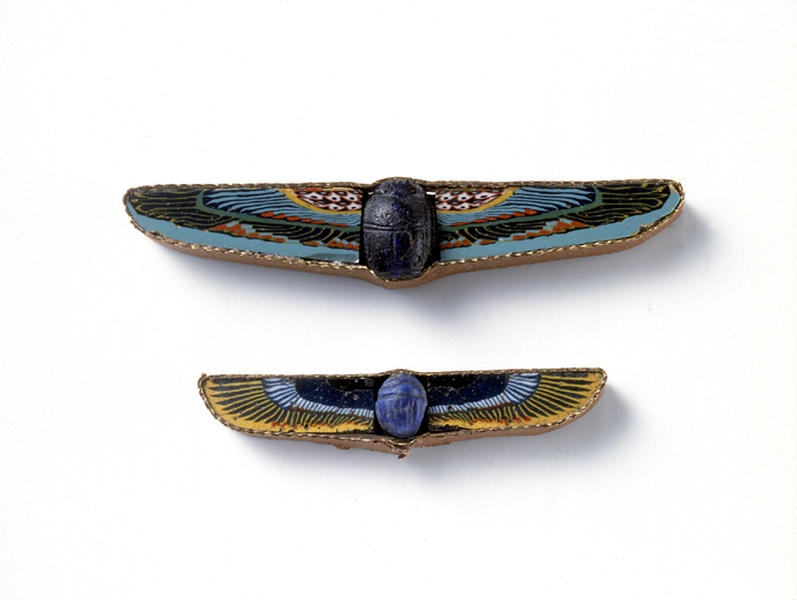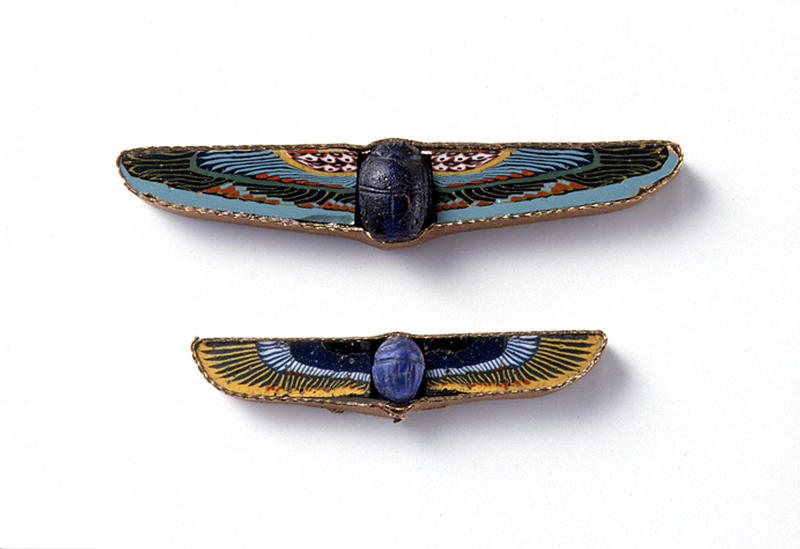翼
- エジプト
- 紀元前1-紀元後1世紀
- ガラス
それぞれ、片方の翼を表したモザイクガラスから切断した2枚を、裏表にして対称形に組み合わせ、広げた翼の形に作っている。黒色、紺色、白色、黄色、赤色、青色、緑色、青緑色で細部を表現した。翼の間にはガラス(a)とラピスラズリ(b)で作られたスカラベが置かれている。有翼のスカラベは古代エジプトで副葬品として使われたが、本作品のスカラベは同時代ではなく(紺色ガラス製スカラベは前4-前3世紀のエトルリア、ラピスラズリ製スカラベは現代のもの)、あとで再構成したものである。この作品を含む本展覧会出品の象嵌用モザイクガラスは、大部分が19世紀末から20世紀初頭にかけて形成されたヨーロッパの個人コレクションに由来しているが、当時は、さらに美しく見えるように裏打ちをして金で縁取りすることが流行しており、このように再構成することもあった。
Catalogue Entry
These works are shaped in the form of spread wings, made up of the same mosaic elements cut into two sections which are then combined in reversed front to back pairs. The detailed areas of the wings are shown in black, cobalt, white, yellow, red, blue, green and turquoise. Glass (a) and lapis lazuli (b) scarabs have been placed into the space between the wings. Winged scarabs were used as burial goods in ancient Egypt, but these scarabs are not of the same period as their wings and were assembled at a later date. These works and the majority of the examples of mosaic glass used for inlay which are included in this exhibition come from European private collections assembled at the end of the 19th and beginning of the 20th centuries. During that period it was the fashion to back and outline these works in gold, or as here, reconstruct them with other elements.

